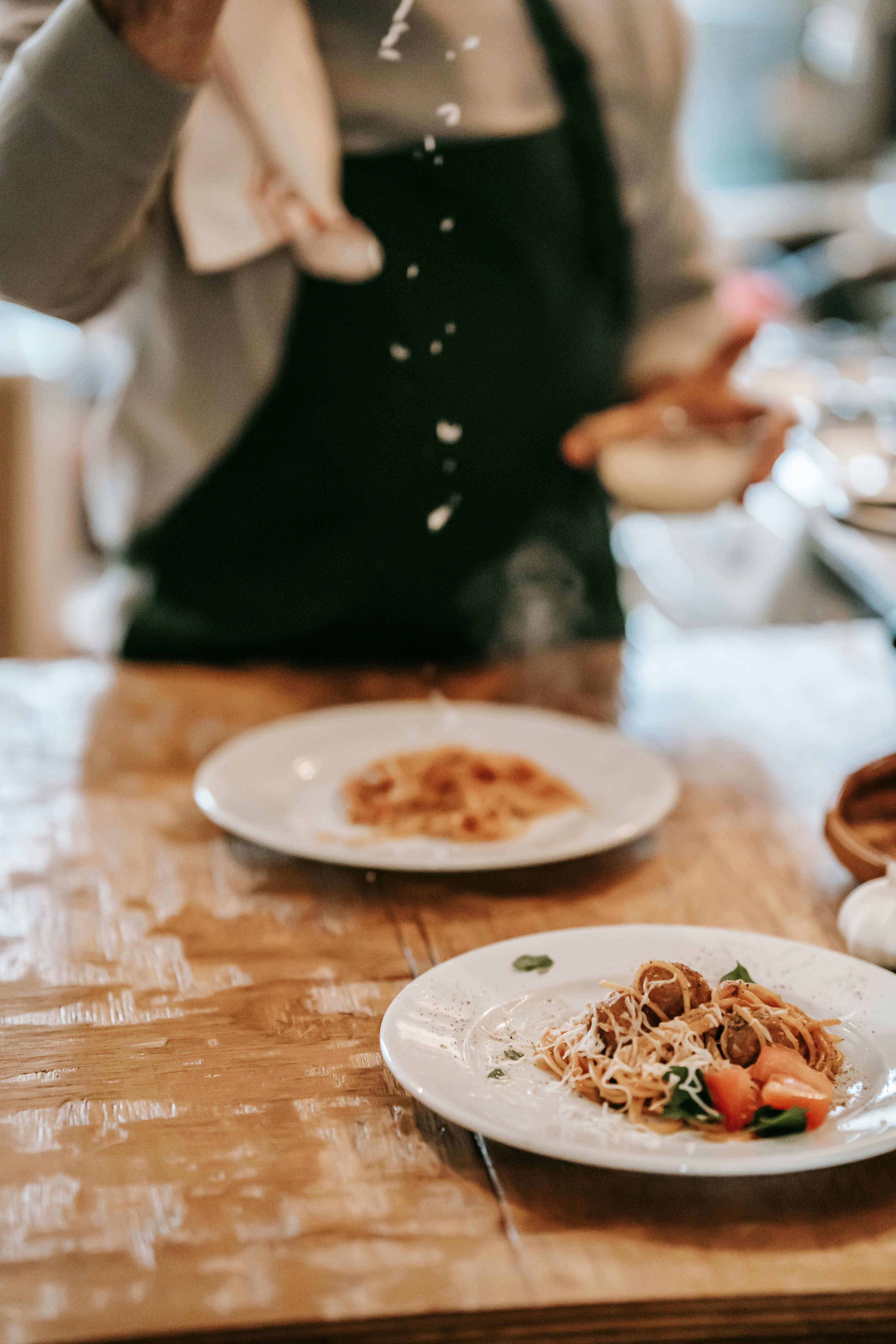Chef Secrets for Authentic Swedish Meatballs: Perfection Every Time
What if I told you that Sweden’s beloved meatballs—those subtly spiced, creamy-sauced wonders that have enchanted home cooks and Michelin-starred chefs alike—aren’t nearly as elusive or unachievable as most people think? The funny thing is, when I first started as a line cook in a contemporary Scandinavian kitchen more than a decade ago, I thought I knew everything about köttbullar (Swedish meatballs). After all, I’d grown up with meatballs on weeknights, doused them in sauce at holiday buffets, and eaten my fair share at global restaurants promising “Scandinavian authenticity.” Turns out, my confidence was misplaced. The road to meatball mastery is much more nuanced, and definitely more interesting, than I’d assumed.
Here’s the thing: perfection isn’t about chasing some mythical “secret ingredient.” It’s about understanding technique, the science behind every step, and those quirky chef tricks you only learn by burning, remixing, or outright ruining a few batches along the way. Today, I’m sharing everything I wish I’d known from the outset—genuine chef secrets, yes, but also the evolving wisdom (and blunders) from years behind the swinging kitchen door.
A Brief History & Origins of Swedish Meatballs
Let’s set the scene: it’s a cozy winter afternoon in Stockholm, snow gently falling outside. There’s something irresistible about the aroma of frying onions mingling with allspice and fresh ground pepper—a scent nostalgic for generations of Swedes. But what might surprise you is how international the roots of this dish truly are. According to a 2 Smithsonian Magazine feature, Swedish meatballs actually trace their ancestry to a Turkish recipe brought home by King Charles XII in the early 18th century. Even more interesting? Many of the earliest Swedish recipes called for veal and pork, with beef emerging as a core ingredient only in the late 19th century4.
“Food culture is living history. Every time we roll meatballs in Sweden, we’re continuing a dialogue with our past, our neighbors, and our own families.”
What really stands out in the Swedish approach to meatballs is its blend of seriousness and play. On one hand, there are centuries of tradition and even national debate—should the balls be pan-fried or baked, what’s the ideal sauce, what type of lingonberry to serve alongside? On the other, there’s immense freedom for personal touches, modern twists, and family adaptations. Even the 1 Swedish government’s own food and agriculture museums highlight the breadth of regional interpretations, from the north’s reindeer meat to the south’s sweetness-enhanced pork blends.
Swedes eat an average of more than 3 million meatballs every single day. In fact, the IKEA food court alone serves over 1 billion worldwide annually—a staggering cultural export that shows just how beloved this dish has become.3
The Ingredient Science of Swedish Meatballs
Let me step back for a second. Before you even start rolling, your ingredient choices handle 70% of the heavy lifting. Want authentic results? Respect these principles, but don’t be afraid to improvise—Swedish heritage is about evolution, not rigidity.
- Meat blend: Classic köttbullar uses a mix (ideally beef and pork, sometimes veal or even elk). Aim for roughly 60% beef to 40% pork. Pork adds juiciness and flavor; lean, all-beef versions are at risk of drying out.7
- Binder: Day-old bread or breadcrumbs soaked in cream or milk is non-negotiable. This isn’t an “Italian meatball” thing—it creates pillowy texture, holds moisture, and prevents bounce-back toughness. (Back when I absentmindedly used fresh bread, the balls fell apart. Never again.)
- Allium: Gently sautéed yellow onion—not raw!—brings the slight sweetness and foundation. (Raw onions bite, cooked ones blend.)8
- Spicing: White pepper and allspice create that distinct, elusive “Swedishness.” Nutmeg and even a whisper of ginger pop up in some recipes, but restraint is key.
- Graisse: A bit of unsalted butter (almost sacred in Swedish kitchens) for frying is essential—neutral oil simply doesn’t carry flavor the same way.10
Buy the freshest ground meat possible, or grind your own—you’ll control texture, flavor, and fat content, and avoid that mysterious supermarket “grayness” that haunts so many home versions.
So, what about meat alternatives? Actually, let me clarify: While vegan “meatballs” are a growing trend in Stockholm these days, and I respect the creativity, the authentic taste profile of classic köttbullar still centers on animal proteins. That said, many modern chefs—including myself on occasion—have succeeded with plant-based blends using mushroom, oat, and lentil combos for a surprisingly meaty vibe (especially when proper spices and binders are used). Is it the same? Not quite, but that’s a discussion for another day.
Pro Chef Techniques: Real Secrets for Perfection
Now, let’s get to the chef’s real secrets—the sort of things you pick up when you’ve prepped a thousand trays for a Swedish Christmas banquet or spent hours perfecting family recipes side-by-side with grandmothers who don’t believe in measuring spoons. Spoiler: None of the hacks involve fancy equipment or rare ingredients—just technique and care. Here’s what truly sets “perfect” meatballs apart from the dense, bland, or crumbly imitators.
- Keep everything cold (except the onions). Mixing meat with cold hands, cold bowls, and even chilling the shaped balls before frying prevents melted fat and ensures tender texture. Those first few months in pro kitchens? I once “saved time” by skipping the chill. Regretted it à chaque fois.
- Don’t overwork the meat. Gentle combining—just until the mix holds together—results in bite-sized, soft perfection. Over-mixing turns everything rubbery. I’ve lost count of how many batches turned out “bouncy.” Lesson learned the hard way.
- Test fry your mix. Chefs always fry off a mini-patty and taste it before rolling the full batch. Seasoning too light? Add more. Texture off? Adjust your breadcrumbs or cream. Chefs learn to trust their palate, not the written recipe.13
- Pan-fry, don’t oven-bake. Searing in a buttered pan gives real Swedish meatballs their signature crust (that extra bit of “Maillard magic”), while also creating perfect pan juice for your gravy base. Oven-baked is easier, yes, but you lose essential flavor—a fact any seasoned Stockholm chef will confirm.12
- Size matters. Sweden’s classic is a modest, 1-inch ball—easy to eat in one or two bites and cooks through perfectly. Oversized balls often burn outside and go raw inside, a rookie mistake even some skilled home cooks make.
Honestly, what struck me over the years is just how much emotional authenticity gets packed into these little spheres. Whether I was shadowing line cooks at historic Stockholm bistros or swapping shortcuts with food scientists at culinary conferences, the sense of reverence for tradition mixed with creative playfulness was always present.
Some chef’s quirks I’ve adopted: lightly oiling my hands to stop sticking (and keep shaping gentle); using a two-spoon “quenelle” technique at high volume instead of hand-rolling for speed; letting the shaped balls “rest” 10-15 minutes before frying for better cohesion. Yet, at home, I return to classic hand-rolling—even the supposed “imperfections” give character.
If you want EXTRA tender balls, soak your breadcrumbs or bread in a combination of cream and beef stock—not just plain milk. This lends richness and deep umami notes.
Cream Sauce Perfection: From Roux to Finish
Sauce is not an afterthought. It’s the finishing touch that transforms meatballs from “just meat” into a crave-worthy, balanced meal. There are loads of sauce recipes floating around, but authentic Swedish cream sauce (gräddsås) always, always starts in the same pan—where you fried the meatballs—using those flavorful brown bits as the backbone.
| Traditional Ingredient | Pro Chef Function | Pro Substitutes | Pièges courants |
|---|---|---|---|
| Butter | Melts for roux, carries flavor |
None recommended | Overheating, browning too far |
| Flour | Thickens sauce, stabilizes emulsion | Arrowroot, gluten-free mix | Lumpy, raw taste if rushed |
| Beef/Chicken Stock | Umami, depth | Mushroom stock (for vegetarian) | Watery if low-sodium, bland if boxed |
| Crème | Luscious texture, classic flavor | Oat cream (modern Swedish brands) | Splitting, over-reducing |
- Deglaze with a splash: Water, stock, or even a shot of brandy works. Scrape up every caramelized bit for flavor.
- Add cream gradually: Let each addition incorporate fully for a smooth, glossy texture. Rushing leaves you with lumps.
- Taste and season last: Once the sauce thickens to coat a spoon, adjust salt, pepper, and a dash of soy or Worcestershire for depth.
One last thing: classic accompaniments in Sweden—silky mashed potato, a spoonful of tart-sweet lingonberry preserve, and sometimes quick-pickled cucumber—aren’t just “garnish.” Their contrasts (rich, sweet, sour, creamy) are as carefully balanced as the main event. Skip them at your own peril.
Reserve a handful of chopped fresh parsley for finishing. The herbal brightness adds dimension and a fresh visual pop on the plate—plus, it’s a chef trick for slyly covering up over-browned edges.

Seasonal, Local, and Modern Twists on a Swedish Classic
Interestingly enough, while the foundation of Swedish meatballs is classic, modern chefs (myself included, occasionally) love experimenting. The fake “purist” stance? In my view, a bit overrated. Swedish culinary tradition values adaptability—and the best results often come from respecting the spirit, not just the letter, of the recipe.
For example, swapping in venison or reindeer for beef creates a meatball with richer, slightly gamier notes and a smooth texture—especially popular in Lapland. In summer, fresh herbs (think dill or chives) and a splash of lemon brighten what’s usually a heavier dish.
Last year, during Sweden’s short but glorious asparagus season, I even added thin batons of grilled green asparagus alongside the meatballs—a move that would shock my grandmother but thrilled my restaurant’s regulars. That’s what keeps tradition alive.
- Seasonal proteins: Try game meats (venison, moose, elk) for truly local flavor during autumn hunts.
- Herb profiles: Thyme and sage in winter; dill and chive in spring/summer—let the sauce echo your herb choice for clean flavor harmony.
- Foraged mushrooms: Chantarelles or morels (when available) in the sauce add serious depth and unique umami.
- Grain alternatives: Rye breadcrumbs or even rolled oats for a denser, rustic feel—try this with wild game or pork blends.
- Vegan and gluten-free: Swedish chefs now frequently use oat cream and ground mushroom-lentil blends; texturally, these succeed surprisingly well in professional hands.
Sweden is a world leader in food sustainability and innovation. Many acclaimed Stockholm restaurants have received national awards for sustainable ingredient sourcing and forward-thinking reinterpretations of classic meatballs.5
Real-Life Chef Case Study: Modern Swedish Bistro in Gothenburg
In 2022, I collaborated on a menu at a small bistro in Gothenburg that featured “Farm-to-Table Köttbullar.” Every component—from the beef (from a sustainable farm in Småland) to the hand-picked wild mushrooms and house-fermented lingonberries—echoed the local terrain.
What made the dish a guest favorite wasn’t complexity, but radical transparency: ingredient origins, farmer partnerships, and a focus on “hyper-local” adaptations. The chef-owner encouraged staff to share personal meatball memories with each table, sparking conversations about family, place, and the modern meaning of traditional food. Funny enough, the dish outsold more technically impressive options all year.
“Guests want more than nostalgia—they crave connection and story. Our meatballs are a bridge between old Sweden and the country we’re building today.”
Troubleshooting FAQ and Common Mistakes
Even great cooks struggle sometimes—so let’s troubleshoot the most frequent (and, honestly, most frustrating) problems I’ve watched students and colleagues alike encounter:
- Why are my meatballs dry? Could be too lean a meat blend (add more pork), overcooking, or over-mixing. Add a splash more cream next round, and mind your heat.
- They keep falling apart! Usually this is too little binder or not enough resting time before frying. Make sure breadcrumbs are soft and haven’t absorbed all the liquid. Chill shaped meatballs 15-20 minutes prior to frying.
- My sauce splits or turns gray? Heat is too high, or you’ve added cream too quickly. Pull the pan off the burner and whisk. If necessary, a spoonful of cold stock can sometimes rescue a broken sauce.
- The flavor feels “flat.” Don’t rush on caramelizing onions, trust a light hand with allspice/white pepper, and always taste your fried sample before rolling the rest!
For absolute beginners: Document your own failed batches! Take notes and photos. Even after 15 years, I look back through my “meatball mistake folder” for reminders on what pas to repeat.
Culture, Tradition, and Why It Matters
I have to say, my own appreciation for Swedish meatballs deepened most during conversations with friends and older chefs over long, late dinners. Köttbullar isn’t just a recipe—it’s a touchstone for discussion about migration, economic change, rural life, and urban reinvention. Today, the dish is found everywhere from school cafeterias to Michelin-star restaurants; it’s served at weddings, funerals, and the ubiquitous Swedish Christmas julbord buffet.6
From my perspective, keeping this food “alive” depends on understanding both the pourquoi and the comment: the reasons behind the rituals, the joy in variation, the respect for seasonality, and the willingness to try—sometimes fail—and adapt. The best meatballs I ever tasted? It wasn’t at a fancy spot, but in a Malmö kitchen with a friend who’d tweaked her grandmother’s recipe for her kids’ allergies, blending oat cream and elderflower syrup for the sauce. Talk about modern tradition in action!
References & Sources
Conclusion: Keep Rolling, Keep Experimenting
Let’s step back before we wrap up. For all the talk of “secrets” and “perfection,” here’s my hard-won truth: the best Swedish meatballs come from blending tradition, personal taste, and a willingness to fail. I am still learning—still tinkering, still listening to colleagues and home cooks as much as world-class chefs. If you’re searching for absolute authenticity, focus on what makes this food meaningful to you: the technique, the story, the hands that shaped it, the folks who gather at your table.
I’ve seen so many home cooks shy away from “difficult” dishes, intimidated by an imaginary wall between professional kitchens and the home stove. But actually, the difference is less about resources and more about patience, curiosity, and a refusal to accept mediocrity. Every chef I admire—Swedish or otherwise—would tell you the same.
“We keep rolling meatballs not because they’re easy, but because they matter. They’re Sweden’s heart on a plate—and it’s worth getting them right.”
Try the chef-tested secrets in your own kitchen this week. Experiment. Taste. Learn. And most of all—share the stories (and mistakes!) that come from your own hands. Perfect meatballs aren’t the point; personal meatballs are.



